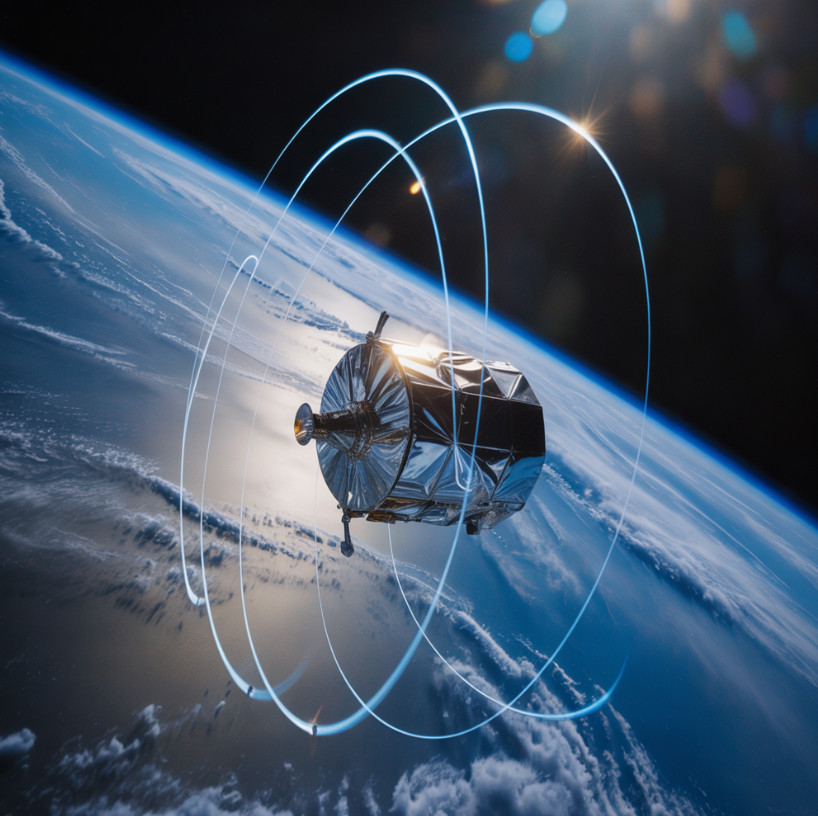
🛰️ Spacecraft Propulsion & Power: Engineering Endurance Beyond Earth
Every spacecraft carries the same invisible adversary: radiation. High-energy particles from the Sun, cosmic rays from beyond the galaxy, and sudden bursts from magnetospheric storms all conspire against the fragile electronics that form the brains and lifeblood of modern missions. Silicon has served well, but it was never designed for such extremes. Shielding helps, redundancy helps, but failure in deep space remains an ever-present risk.
Magnetic diodes offer a radical alternative.
By steering flux rather than shuttling electrons, magnetic diode–based systems can provide propulsion control, onboard power management, and computational resilience immune to the weaknesses of conventional semiconductors. These devices do not depend on electron populations vulnerable to ionizing radiation. Instead, they lock in magnetic states that remain stable under conditions that would cripple or destroy silicon.
🧲 Flux Logic in Space
The heart of this advance is radiation-hardened flux logic, enabled by active magnetic diodes.
- One-way flux pathways → information and control functions encoded in magnetic state, not charge carriers.
- Minimal switching energy → far less waste heat, critical where radiators are limited.
- Radiation immunity → flux pathways remain stable under particle bombardment, cosmic rays, and EMP events.
- Longevity → reduced degradation from thermal cycling ensures performance across decades, not just years.
These attributes make flux-onic systems a natural candidate for spacecraft that must operate for long durations far from Earth’s protective magnetic shield.
⚡ Propulsion & Power Integration
Spacecraft systems are defined by strict resource budgets. Every watt counts. Every gram of thermal radiator surface area is a trade-off. Magnetic diodes promise substantial improvements across propulsion and power domains:
- High-efficiency motor drives Reaction wheels, ion thrusters, and robotic actuators all depend on motors that must run silently and efficiently. Dynamic flux control reduces losses, lowers cooling demands, and extends component life.
- Smart power routing Energy harvested from solar arrays or radioisotope thermoelectric generators can be dynamically steered with minimal losses, enabling adaptive load-sharing without heavy or failure-prone switching hardware.
- Compact control electronics Flux logic reduces dependency on radiation-hardened silicon, freeing spacecraft design from the compromises of bulky shielding and redundant system mass.
- Survivability in extreme environments From lunar nights to interplanetary radiation storms, flux-based systems promise continuous operation where silicon falters.
🌍 Institutional Impact & Prestige
A world-first demonstration of magnetic diode applications in spacecraft power and propulsion would resonate across aerospace, defense, and academic circles.
- Strategic leadership → being the first to publish working flux-onic spacecraft control or power subsystems would elevate an institution to international prominence.
- Cross-disciplinary collaboration → aerospace engineering, magnetic materials, cryogenics, and computational logic converge in this domain, providing fertile ground for landmark research projects.
- Prestige and recognition → national space agencies and private space companies alike would look to the institution that proves flux-onic systems viable in orbit or deep space.
For any institution, leading such a breakthrough is more than a research milestone — it is an enduring contribution to the future of exploration.
🚀 A Brighter Future in the Harshest Places
Picture spacecraft with:
- Thrusters and actuators running cool and efficient for decades.
- Power management immune to solar flares or radiation storms.
- Control logic still functioning flawlessly after years in deep space.
This is not speculative fiction. With magnetic diodes, it becomes an achievable near-term reality. The shift away from vulnerable electron-based architectures is not just desirable — it is essential for humanity’s expansion into the solar system and beyond.
🌟 Conclusion
Silicon enabled the first steps into orbit. Magnetic diodes will enable the leap into deep space.
Institutions that seize this opportunity will not only solve immediate problems of resilience, efficiency, and longevity, but also cement their place as pioneers of the next age of exploration. To be the first to harden spacecraft with flux-based propulsion and power is to set a benchmark that others will follow.
What a future to be part of.
